Ginger Tea: A Natural Remedy for Period Bloating – An Indian Youth’s Guide
Menstrual cycles can be challenging, with cramps, mood swings, and the infamous bloating making it hard to function at your best.
If you’re an Indian youth juggling studies, work, and social commitments, the added discomfort of period bloating can feel like an unwelcome guest. But what if the solution lies in your kitchen?
According to age-old wisdom—something our mothers have always known—ginger tea is a simple, effective remedy for easing period bloating.
This blog delves into why ginger tea is a go-to solution for menstrual bloating and how it aligns with the lifestyle of Indian youth. Let’s explore how this golden elixir can make your period days a little easier.
Understanding Period Bloating
Period bloating occurs due to hormonal fluctuations, particularly increased levels of estrogen and progesterone. These hormones cause water retention, which leads to a feeling of puffiness or tightness, especially around the abdomen.
While bloating is a normal part of the menstrual cycle, it can be uncomfortable and frustrating.
Why Do Indian Youth Face More Challenges?
As a young Indian, you may already have a hectic lifestyle, balancing academics, work, or other responsibilities. Add to this the cultural expectations and dietary habits that sometimes lean heavily on processed foods, salt, or caffeine—all of which can exacerbate bloating.
Furthermore, in many Indian households, discussing menstruation with male family members is still considered taboo. Some deeply ingrained cultural practices also restrict women during their menstrual cycle, such as not allowing them to enter the kitchen or sleep in a proper bed.
These emotionally distressing practices can, in turn, cause stress, leading to the release of cortisol, a stress hormone that worsens physical discomfort, including bloating.
This is where natural remedies like ginger tea can make a significant difference.
Why Ginger Tea Works Wonders for Period Bloating
1. Anti-inflammatory Properties
Ginger contains powerful anti-inflammatory compounds called gingerols and shogaols. These help reduce the inflammation in the gut, relieving bloating and soothing abdominal discomfort.
2. Promotes Digestive Health
Bloating often stems from digestive issues like slow metabolism or gas buildup. Ginger tea stimulates the digestive enzymes, aiding in faster digestion and reducing gas.
3. Diuretic Effect
Ginger tea has mild diuretic properties that help flush out excess water from the body, reducing water retention and puffiness.
4. Hormonal Balance
Ginger may also play a role in regulating hormones, helping reduce the severity of period symptoms, including bloating, cramps, and mood swings.
5. Warmth and Comfort
A hot cup of ginger tea provides warmth and relaxation, which can ease period discomfort and elevate your mood during challenging days.
Ginger Tea for Period Bloating: Step-by-Step Approach with External Resources
Here’s how you can implement ginger tea as a remedy for period bloating, broken down into actionable steps. Additionally, external links provide deeper insights and credibility.
Step 1: Understand the Science Behind Ginger and Menstrual Health
Before diving into remedies, it’s helpful to understand why ginger is effective for bloating and menstrual discomfort. Research confirms its anti-inflammatory, digestive, and hormone-regulating properties.
External Resources:
Step 2: Gather Ingredients
Head to your kitchen or a local grocery store to gather the following ingredients:
- Fresh ginger root
- Water
- Optional: honey, lemon, or additional spices like cardamom
External Resources:
- BBC Good Food: Why Fresh Ginger Is Better Than Powder
- Times of India: Ginger Benefits in Indian Cooking
Step 3: Prepare Ginger Tea
Follow this quick recipe:
- Boil 2 cups of water in a pan.
- Grate or thinly slice 1-2 inches of fresh ginger.
- Add the ginger to the boiling water and let it simmer for 5-7 minutes.
- Strain the tea into a cup.
- Add a teaspoon of honey or a squeeze of lemon for extra flavor.
External Resources:
Step 4: Drink Responsibly
Consume ginger tea once or twice a day during your menstrual cycle. Avoid drinking excessive amounts, as it can lead to acidity or heartburn in some individuals.
External Resources:
Step 5: Pair Ginger Tea with Lifestyle Adjustments
For maximum relief, complement ginger tea with:
- Hydration: Drink at least 2-3 liters of water daily.
- Diet: Include fiber-rich foods and avoid salty snacks.
- Light Exercise: Try yoga or gentle stretching exercises.
External Resources:
Step 6: Monitor the Results
Keep track of how ginger tea affects your period symptoms over a few cycles. If the bloating significantly reduces, incorporate it into your routine. However, if symptoms persist, consult a healthcare provider.
External Resources:
- WebMD: When to See a Doctor for Menstrual Symptoms
- National Library of Medicine: Gut Health and Hormonal Cycles
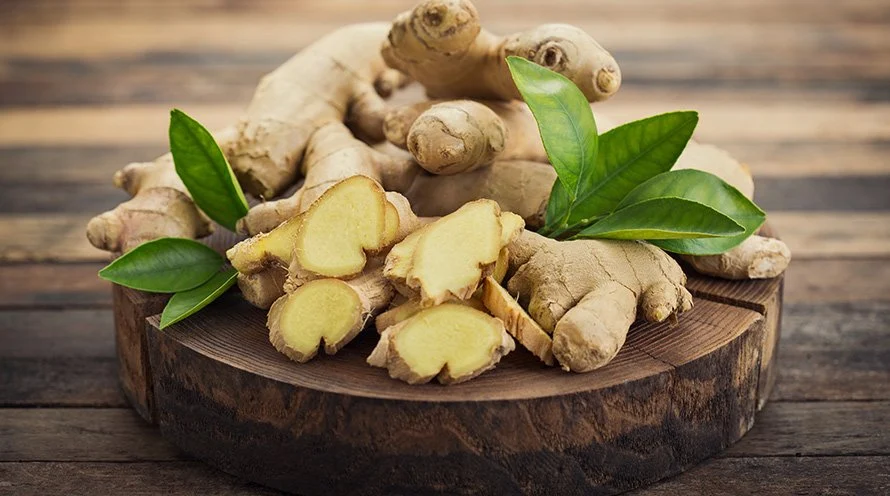
Quick Overview of the Steps to Use Ginger Tea for Period Bloating
- Understand the Science Behind Ginger
Ginger’s anti-inflammatory and digestive properties make it effective for easing period bloating. Its ability to regulate hormones also helps reduce discomfort during your menstrual cycle. - Gather the Ingredients
You’ll need fresh ginger root, water, and optional ingredients like honey, lemon, or cardamom for added flavor. - Prepare Ginger Tea
Boil 2 cups of water, add grated or sliced ginger, and let it simmer for 5-7 minutes. Strain into a cup and add honey or lemon if desired. - Drink Responsibly
Drink ginger tea once or twice a day during your period, but avoid overconsumption to prevent acidity or heartburn. - Pair with Lifestyle Adjustments
Stay hydrated, eat fiber-rich foods, and engage in light exercise like yoga to enhance the effectiveness of ginger tea in reducing bloating. - Monitor the Results
Track how your symptoms change over a few cycles. If bloating decreases, continue using ginger tea. If symptoms persist, consult a healthcare provider.
By following these simple steps, you can naturally manage period bloating and stay connected to time-tested, culturally rooted remedies.
When and How Often Should You Drink Ginger Tea?
For best results, drink ginger tea:
- 1-2 times a day during your menstrual cycle, especially when bloating is at its peak.
- First thing in the morning on an empty stomach or in the evening for a calming effect.
Avoid overconsumption, as too much ginger can sometimes cause heartburn or acidity.
The Cultural Connection: Wisdom Passed Down
In Indian households, natural remedies like ginger tea have been trusted for generations. Whether it’s curing a sore throat or soothing an upset stomach, ginger holds a revered place in Ayurvedic medicine. Our mothers and grandmothers often know the value of these age-old practices, even when modern science is just catching up.
As Indian youth, incorporating these traditional remedies into your lifestyle allows you to stay connected to your roots while addressing modern-day health challenges.
Why Ginger Tea Fits the Lifestyle of Indian Youth
- Quick and Easy to Prepare: With minimal ingredients and effort, ginger tea can be made in minutes, making it perfect for busy students or young professionals.
- Affordable and Accessible: Ginger is readily available in most Indian kitchens, making this remedy cost-effective and convenient.
- Customizable Flavor: You can experiment with add-ons like cardamom, cinnamon, or tulsi to suit your taste preferences.
- Holistic Wellness: Beyond bloating, ginger tea helps with cramps, nausea, and even stress—common challenges faced by Indian youth.
Additional Tips to Combat Period Bloating
While ginger tea is an excellent remedy, combining it with a healthy lifestyle can enhance its effects:
- Stay Hydrated: Drink plenty of water to prevent water retention.
- Reduce Salt Intake: Avoid salty snacks, which can worsen bloating.
- Eat Fiber-Rich Foods: Include fruits, vegetables, and whole grains in your diet to promote digestion.
- Exercise Gently: Yoga and light stretches can help alleviate bloating and cramps.
- Limit Caffeine: Replace coffee with herbal teas like ginger, chamomile, or peppermint during your period.
Conclusion: A Cup of Comfort
Ginger tea is more than just a beverage—it’s a cup of comfort, offering relief from period bloating and other menstrual woes. As an Indian youth navigating the complexities of modern life, embracing this traditional remedy can be a game-changer for your overall well-being.
The next time your period brings along bloating, listen to your mom’s advice and brew yourself a warm, soothing cup of ginger tea. It’s a small act of self-care that can make a big difference.
So, why wait? Give ginger tea a try and experience its magical benefits for yourself!
Disclaimer:
The information provided in this blog is intended for general informational purposes only. While ginger tea has been traditionally used in Ayurvedic medicine and has some proven health benefits, it should not be considered a substitute for professional medical advice, diagnosis, or treatment. Always consult with a healthcare provider before making any significant changes to your diet, especially if you have underlying health conditions or are taking medications.
Individual results may vary, and excessive consumption of ginger can lead to side effects such as heartburn or gastrointestinal discomfort. Please consume ginger tea in moderation.
The external resources linked in this article are for reference purposes and do not necessarily reflect the views or recommendations of the author.
-

Constipation? Mom’s secret remedy with Onion.
How My Mom’s Onion Remedy Helped Me Overcome Chronic Constipation
Introduction
For as long as I can remember, my mornings as a middle schooler were fraught with frustration, anxiety, and a lot of discomfort. Missing the school bus became a regular occurrence, and the culprit was something I wasn’t even comfortable talking about at the time: chronic constipation. No amount of drinking water or eating fiber seemed to help. The medications prescribed by our family doctor swung the pendulum too far in the other direction, leaving me scared to leave the house for fear of soiling my pants. It was, to say the least, a nightmare.
After trying countless home remedies I found online and experiencing no significant relief, I reached a breaking point. One day, in tears, I begged my mom to take me to a better doctor. That’s when she remembered an old remedy her mother had taught her—a remedy involving onions. What unfolded next changed my life and gave me a deeper appreciation for traditional wisdom. But before I share this remedy, let me stress that everyone’s body is different, and the causes of constipation can vary widely. Always consult a healthcare professional to understand the root cause of your issue.
With that disclaimer out of the way, let me take you through my journey of frustration, discovery, and eventual relief—all thanks to the humble onion.
The Struggles of Chronic Constipation
Dealing with constipation as a middle schooler is more than just a physical issue; it’s deeply embarrassing. It felt like my mornings revolved around trying to do something as basic as passing stool. My stool was often hard, resembling small pebbles, which made the process both painful and time-consuming.
Here are some of the things I tried before turning to the onion remedy:
- Drinking More Water: Every article on the internet seemed to suggest that dehydration was the main culprit. I’d guzzle liters of water every day, but the results were negligible.
- Eating Fiber-Rich Foods: My mom filled my plate with fruits like papaya, guava, and bananas, as well as vegetables like spinach and carrots. I even tried psyllium husk, a popular fiber supplement. Yet, my stool remained stubbornly hard.
- Medications: Our family doctor prescribed laxatives, but these turned out to be more of a curse than a blessing. While they softened my stool, they made it so loose that I was constantly worried about accidents.
- Online Remedies: From drinking warm lemon water to consuming prunes, I tried every internet-recommended solution. None of them provided the relief I desperately needed.
The Turning Point: My Mom’s Forgotten Remedy
After one particularly difficult morning, I broke down and cried in front of my mom, pleading for a solution. That’s when she recalled an old remedy her mother used to swear by. She hesitated at first, as she hadn’t used it in years and wasn’t sure if it would still work. But given how desperate I was, she decided to give it a try.
The key ingredient? Onions. Big or small, red or white—any type of onion would work, as long as it was used the right way. She explained that the trick was not just in the ingredient but also in how it was prepared and administered. Intrigued and slightly skeptical, I agreed to give it a shot.
Why Onions? Understanding the Science
Before diving into the exact recipe, let’s take a moment to understand why onions might work as a remedy for constipation. Onions are rich in natural compounds that promote digestive health:
- Prebiotics: Onions are a great source of prebiotics, which nourish the good bacteria in your gut. A healthy gut microbiome is essential for smooth digestion and regular bowel movements.
- Fiber Content: While not extremely high in fiber, onions do contain enough to contribute to stool bulk and ease constipation.
- Sulfur Compounds: These compounds help stimulate the production of digestive enzymes, which can improve gut motility.
- Water Content: Onions have a high water content, which can help soften stool when consumed.
The Onion Remedy Recipe
Here’s the step-by-step process my mom followed to prepare the onion remedy:
Ingredients:
- 1 medium-sized onion (red or white, both work)
- 1 cup of water
- A pinch of rock salt (optional, for taste)
Method:
- Peel and chop the onion into small pieces.
- Boil the chopped onion in 1 cup of water for 5-7 minutes until the water changes color and the onion softens.
- Strain the mixture to remove the onion pieces, leaving only the onion-infused water.
- Let the water cool slightly, then add a pinch of rock salt if desired.
- Drink this onion water on an empty stomach first thing in the morning.
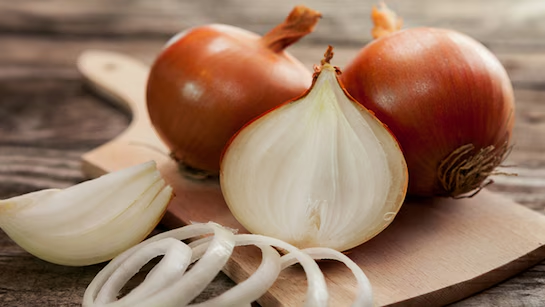
My Experience with the Remedy
The first time I tried this remedy, I was skeptical. The taste was tolerable but not exactly pleasant. However, within a few days of drinking onion water every morning, I noticed a significant difference. My stool became easier to pass, and the pain and strain I had become so accustomed to began to fade. Over the weeks that followed, I found myself spending less time in the bathroom and more time catching the school bus on time.
The best part? Unlike the medications I had tried before, this remedy didn’t have any side effects. It struck a perfect balance—neither too hard nor too soft—and gave me the relief I had been longing for.
Precautions and Considerations
While this remedy worked wonders for me, it’s important to keep a few things in mind:
- Consult a Doctor: Chronic constipation can have various underlying causes, such as hypothyroidism, irritable bowel syndrome, or dietary intolerances. It’s crucial to rule out any serious conditions.
- Allergies: Some people may be allergic to onions. If you experience any adverse reactions, discontinue use immediately.
- Consistency is Key: Natural remedies take time to show results. Don’t expect overnight miracles.
- Balanced Diet: While onion water can help, it’s not a substitute for a healthy diet rich in fruits, vegetables, and whole grains.
Part 2: Additional Tips and Lifestyle Changes
While the onion remedy worked wonders for me, it’s just one piece of the puzzle when it comes to managing and preventing constipation. Here are some additional strategies that complement the remedy and promote long-term digestive health:
1. Stay Physically Active
A sedentary lifestyle can slow down your digestive system, leading to constipation. Incorporate at least 30 minutes of physical activity into your daily routine. Activities like walking, yoga, or even light stretching can improve gut motility and make bowel movements easier.
Specific Yoga Poses for Constipation Relief:
- Pawanmuktasana (Wind-Relieving Pose)
- Malasana (Garland Pose)
- Ardha Matsyendrasana (Half Spinal Twist)
These poses help massage the abdominal organs and stimulate digestion.
2. Optimize Your Fiber Intake
While fiber didn’t initially work for me, I realized that the type of fiber matters. There are two types of fiber: soluble and insoluble. A balance of both is essential:
- Soluble Fiber: Found in oats, apples, and beans, this type of fiber absorbs water and forms a gel-like consistency, softening the stool.
- Insoluble Fiber: Found in whole grains, nuts, and vegetables, this type adds bulk to the stool and helps it pass more easily.
Aim for a mix of both in your diet.
3. Stay Hydrated
While water alone didn’t solve my constipation, it’s still a critical part of the equation. Dehydration can harden your stool and make it difficult to pass. Sip water throughout the day, and consider adding hydrating foods like cucumbers, watermelon, and citrus fruits to your diet.
4. Try Probiotics
A healthy gut microbiome is crucial for digestion. Incorporate probiotic-rich foods like yogurt, kefir, and fermented pickles into your diet. These can help balance gut bacteria and improve bowel regularity.
5. Establish a Routine
The human body thrives on routine. Try to wake up, eat meals, and go to bed at the same time every day. Additionally, train your body to have a bowel movement at a consistent time, preferably in the morning.
5. Establish a Routine
Our bodies love consistency. Setting a regular schedule for meals and bathroom visits can train your digestive system to operate like clockwork. For instance, waking up at the same time each morning and allotting a few minutes for bathroom time—even if you don’t immediately feel the urge—can encourage your body to establish a natural rhythm.
6. Avoid Overeating and Processed Foods
Processed foods, fast foods, and excessive sugar can slow down digestion, exacerbating constipation. Instead, prioritize whole foods like fresh fruits, vegetables, and whole grains. Eat smaller, more frequent meals throughout the day to reduce the burden on your digestive system.
7. Practice Stress Management
Stress can wreak havoc on your gut. High cortisol levels can disrupt digestion and lead to constipation. Practices like meditation, deep breathing, or even a simple 10-minute break to relax can help ease both your mind and your bowels.
8. Monitor Trigger Foods
Everyone’s digestive system is unique. Some people find that dairy, caffeine, or certain high-fat foods worsen their constipation. Keep a food diary to identify and avoid any specific triggers.
9. Herbal Teas and Natural Laxatives
While onion water was my savior, other natural remedies may work for you. Consider sipping on:
- Peppermint tea: Helps relax digestive muscles.
- Ginger tea: Stimulates digestion.
- Aloe vera juice: Acts as a mild natural laxative.
Always use these sparingly to avoid dependency.
10. Use Squatting Positions
Believe it or not, posture plays a role in bowel movements. Using a small stool to elevate your feet while on the toilet can simulate a squatting position, which is the natural posture for easier elimination.
11. When to Seek Medical Help
If constipation persists despite trying these remedies and lifestyle changes, it’s time to seek medical advice. Chronic constipation may indicate an underlying health issue such as hypothyroidism, irritable bowel syndrome (IBS), or even a structural problem in the digestive tract.
Conclusion: A Journey to Relief
Chronic constipation can be more than just a physical discomfort—it can affect your mental and emotional well-being. My journey taught me the importance of patience, persistence, and listening to both traditional wisdom and modern science.
The onion remedy may have been my personal breakthrough, but the key to lasting relief lies in holistic lifestyle changes. By combining natural remedies, dietary adjustments, and mindful habits, you can pave the way to a healthier and more comfortable life.
If you’re struggling with constipation, take heart: relief is possible, and it may come from the most unexpected places—like the onions sitting in your kitchen right now.
Disclaimer: This blog is based on personal experience and should not be taken as medical advice. Consult a healthcare professional for personalized guidance.
Here are some suggestions for external links you can incorporate into your blog for better SEO:
External Links for Science-Backed Information:
- Onion Health Benefits:
- Link to a reliable source discussing onion benefits, like Healthline’s article on onions:
https://www.healthline.com/nutrition/onion-benefits
- Link to a reliable source discussing onion benefits, like Healthline’s article on onions:
- Prebiotics and Gut Health:
- Include a link about prebiotics and their role in digestion from a trusted resource like the National Institute of Health (NIH):
https://www.ncbi.nlm.nih.gov/pmc/articles/PMC6627208/
- Include a link about prebiotics and their role in digestion from a trusted resource like the National Institute of Health (NIH):
- Fiber and Constipation:
- Link to a study or guide on how dietary fiber aids in constipation relief, like Mayo Clinic’s guide on fiber:
https://www.mayoclinic.org/healthy-lifestyle/nutrition-and-healthy-eating/in-depth/fiber/art-20043983
- Link to a study or guide on how dietary fiber aids in constipation relief, like Mayo Clinic’s guide on fiber:
Links for Yoga Poses and Physical Activity:
- Yoga for Digestion:
- Share a link to a step-by-step guide on yoga poses for constipation relief, such as Yoga Journal’s article:
https://www.yogajournal.com/poses/yoga-for-digestion
- Share a link to a step-by-step guide on yoga poses for constipation relief, such as Yoga Journal’s article:
Natural Remedies and Probiotics:
- Probiotics and Digestive Health:
- Link to a comprehensive guide on probiotics and their role in gut health from Harvard Health Publishing:
https://www.health.harvard.edu/staying-healthy/the-benefits-of-probiotics
- Link to a comprehensive guide on probiotics and their role in gut health from Harvard Health Publishing:
- Herbal Teas for Digestion:
- Suggest an external source like WebMD’s article on herbal teas:
https://www.webmd.com/diet/herbal-teas-for-digestion
- Suggest an external source like WebMD’s article on herbal teas:
Medical Advice and Constipation Causes:
- Understanding Chronic Constipation:
- Link to an authoritative medical resource like Cleveland Clinic’s overview on constipation:
https://my.clevelandclinic.org/health/diseases/4059-constipation
- Link to an authoritative medical resource like Cleveland Clinic’s overview on constipation:
- When to See a Doctor:
- Provide information on when constipation may require medical attention from Johns Hopkins Medicine:
https://www.hopkinsmedicine.org/health/conditions-and-diseases/constipation
- Provide information on when constipation may require medical attention from Johns Hopkins Medicine:
-
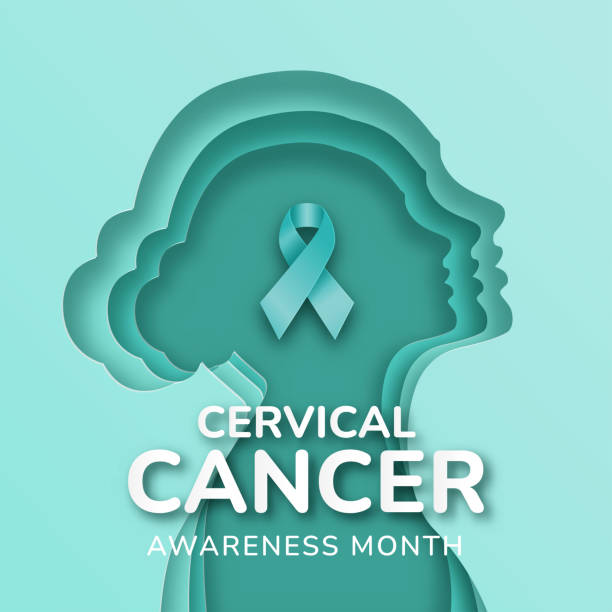
8 Early Signs of Cervical Cancer You Should Not Overlook
Cervical cancer is one of the leading causes of cancer-related deaths among women in India and worldwide. However, early detection can make a significant difference in managing and treating the disease effectively. Awareness of the early signs and symptoms is key to ensuring timely medical intervention. Here, we explore 8 early warning signs of cervical cancer that you should never ignore.
1. Unusual Vaginal Bleeding
Irregular or abnormal bleeding outside your regular menstrual cycle is one of the most common early signs of cervical cancer. This includes:
- Bleeding after intercourse
- Bleeding between periods
- Postmenopausal bleeding
If you notice any of these, consult a healthcare provider immediately. Early intervention can prevent complications and facilitate timely treatment.
2. Persistent Pelvic or Lower Back Pain
Pelvic pain is often mistaken for menstrual cramps, but persistent or severe pelvic pain that doesn’t coincide with your menstrual cycle may indicate an underlying issue, including cervical cancer. This pain might also extend to your lower back and legs, signaling potential cancerous growth affecting surrounding tissues.
3. Pain During or After Intercourse
Pain or discomfort during sexual intercourse (dyspareunia) is another warning sign that should not be overlooked. It may result from inflammation or the presence of abnormal cervical tissues. While other conditions, such as infections, can cause similar symptoms, it’s important to rule out cervical cancer.
4. Foul-Smelling or Unusual Vaginal Discharge
Changes in vaginal discharge, such as a watery, bloody, or foul-smelling consistency, could be an early indicator of cervical cancer. Any persistent or unusual discharge that deviates from your norm should prompt a visit to your healthcare provider.
5. Unexplained Weight Loss
Sudden, unintentional weight loss may be an indicator of advanced-stage cervical cancer. Cancerous cells can alter your body’s metabolism, leading to unexplained weight loss. If you notice a significant drop in weight without changes to your diet or activity level, seek medical advice.
6. Fatigue and Weakness
Persistent fatigue and weakness, even after adequate rest, may be a sign that your body is fighting an underlying condition. Cervical cancer, like other cancers, can deplete your body’s energy reserves, leaving you feeling exhausted.
7. Swelling in the Legs
Advanced cervical cancer can block lymphatic drainage, leading to swelling (lymphedema) in one or both legs. This swelling is often accompanied by pain, making it difficult to move or carry out daily activities.
8. Painful Urination or Blood in Urine
Cervical cancer can spread to surrounding areas, including the bladder, causing symptoms like painful urination, frequent urinary infections, or blood in the urine. These symptoms should never be ignored, as they might indicate an advanced stage of the disease.
The Importance of Early Screening
The above symptoms might not always indicate cervical cancer, as they can be linked to other less serious conditions. However, it’s crucial to undergo regular cervical cancer screenings, such as Pap smears and HPV tests, especially if you’re sexually active or over 30. Screening helps detect precancerous changes or early-stage cervical cancer when it is most treatable.
Prevention Measures You Can Take
The good news is that cervical cancer is largely preventable. Here are some proactive steps to reduce your risk:
- HPV Vaccination: Girls aged 9–14 are advised to get vaccinated against the Human Papillomavirus (HPV), which causes most cases of cervical cancer.
- Regular Screening: Pap smears and HPV testing can help detect cervical abnormalities early.
- Safe Sexual Practices: Use condoms and limit the number of sexual partners to reduce HPV exposure.
- Quit Smoking: Smoking weakens the immune system, making it harder to fight HPV infections.
Why You Shouldn’t Ignore These Signs
Ignoring these early warning signs can allow cervical cancer to progress, making treatment more difficult. For example:
- Advanced cervical cancer may spread to nearby organs, such as the bladder, rectum, or lymph nodes.
- Symptoms like unusual vaginal bleeding or leg swelling may worsen over time, significantly impacting your quality of life.
The Indian government’s recent initiatives, including the introduction of HPV vaccination into the National Immunisation Programme and expanded screening programs under the NPCDCS, underscore the importance of early detection and prevention.
When to Seek Medical Help
If you experience any of the symptoms discussed in the blog it is always advisable to check with the local health provider and get tested for cervical cancer.
Pap Smear in Kerala: A Comprehensive Guide to Cervical Cancer Screening
Cervical cancer remains one of the most preventable cancers, yet it continues to pose a significant threat to women’s health in India. In Kerala, the government and private healthcare systems have implemented efficient protocols to ensure widespread cervical cancer screening through Pap smears. Here, we’ll explore where women in Kerala can get a Pap smear, what happens during the procedure, the critical role of pathologists, and how these efforts are contributing to reducing the cervical cancer burden.
Understanding Pap Smears: The Basics
A Pap smear is a simple and effective test that helps detect abnormal cells in the cervix, which could indicate precancerous changes or cervical cancer. Regular Pap smears have been shown to significantly reduce the incidence and mortality rates of cervical cancer by enabling early detection and treatment.
Where Can You Get a Pap Smear in Kerala?
Kerala has a robust healthcare system, and Pap smears are widely available at different levels of healthcare facilities. Here’s an overview:
- Government Tertiary and District Hospitals:
- Kerala’s government-run tertiary care centers, including medical colleges and district hospitals, routinely offer Pap smears.
- Any woman who visits the gynecology outpatient department (OPD) and undergoes a pelvic examination (PV) is often automatically offered a Pap smear as part of routine screening.
- These facilities are equipped with pathology labs for sample analysis.
- Primary Health Centers (PHCs):
- Under the National Health Mission (NHM), many PHCs in Kerala provide cervical cancer screening.
- Samples collected at these centers are sent to higher centers for detailed pathological analysis.
- Private Hospitals and Clinics:
- Most private hospitals and gynecology clinics offer Pap smear services.
- These facilities often partner with in-house or external pathology laboratories to process the samples.
- Screening Camps:
- Health departments and non-governmental organizations (NGOs) frequently organize cervical cancer screening camps in rural and urban areas.
- These camps provide Pap smears at minimal or no cost, making the test accessible to underserved populations.
What Happens During a Pap Smear?
- Sample Collection:
- During a routine pelvic examination, a gynecologist uses a small spatula or cytobrush to gently collect cells from the cervix.
- This process is quick, minimally invasive, and usually painless.
- Sample Handling:
- The collected cells are either smeared directly onto a glass slide (conventional Pap smear) or suspended in a liquid medium (liquid-based cytology).
- The sample is then sent to a pathology lab for detailed examination.
The Role of Pathologists in Pap Smear Analysis
Pathologists play a critical role in cervical cancer screening. Once the sample reaches the lab, the pathologist performs the following steps:
- Fixation and Staining:
- The cervical cell sample is fixed and stained using the Papanicolaou stain.
- This staining technique highlights the cellular structures, enabling the identification of abnormal changes.
- Microscopic Examination:
- The pathologist examines the stained slide under a microscope to look for abnormalities, such as changes in cell size, shape, and organization.
- They identify potential precancerous changes or signs of malignancy.
- Report Preparation:
- The findings are documented according to the Bethesda System, which categorizes results as normal, atypical, or suspicious for malignancy.
- Common terms in the report include “Negative for Intraepithelial Lesion or Malignancy (NILM)” or “Atypical Squamous Cells of Undetermined Significance (ASC-US).”
- Communicating Results:
- The pathologist sends the report to the gynecologist or healthcare provider who requested the test.
- The doctor reviews the findings with the patient and discusses next steps if any abnormalities are detected.
Why Is Pathology Crucial for Pap Smears?
Pathologists provide the expertise needed to accurately interpret the cellular changes observed in the Pap smear. Their findings guide gynecologists in determining whether further diagnostic tests, such as colposcopy or biopsy, are necessary. This collaboration ensures timely intervention, which is vital for preventing cervical cancer progression.
Cervical Cancer Prevention Efforts in Kerala
- Integrated Screening Programs:
- In Kerala, Pap smears are integrated into routine gynecological care at government hospitals. This ensures high coverage and early detection.
- HPV Vaccination:
- In 2024, the government announced plans to introduce the HPV vaccine into the Universal Immunization Programme. This vaccine targets the Human Papillomavirus, a leading cause of cervical cancer.
- Educational Campaigns:
- Awareness campaigns in Kerala focus on educating women about the importance of Pap smears, HPV vaccination, and regular follow-ups.
- Pathology Infrastructure:
- Kerala’s tertiary and district hospitals have well-equipped pathology labs with trained professionals, ensuring accurate and timely results for Pap smears.
Why Should You Not Delay a Pap Smear?
Many women are unaware of the importance of Pap smears in detecting conditions that may not yet show symptoms. Delaying or avoiding a Pap smear can result in missing the opportunity for early intervention.
Persistent abnormal Pap smear results can indicate a need for further evaluation, as cervical abnormalities are often a sign of deeper health concerns, such as HPV infection or other gynecological conditions.
Challenges in Kerala’s Cervical Cancer Screening Programs
- Cultural Barriers:
- Social stigma and misconceptions about gynecological tests deter some women from undergoing Pap smears.
- Limited Access in Rural Areas:
- Despite Kerala’s robust healthcare infrastructure, women in remote areas may face challenges accessing screening services.
- Follow-Up Care:
- Ensuring that women with abnormal results receive appropriate diagnostic confirmation and treatment remains a challenge.
Conclusion: Take Charge of Your Health
In Kerala, the healthcare system provides easy access to Pap smears, making it one of the most effective ways to prevent cervical cancer. By taking advantage of these services, women can detect cervical abnormalities early and significantly improve their chances of successful treatment.
If you’ve never had a Pap smear or if it’s been a long time since your last one, visit your nearest healthcare center today. Remember, your health is your responsibility, and early detection saves lives.
Final Thoughts
While early symptoms of cervical cancer may seem mild or similar to those of other conditions, being vigilant about changes in your body can save your life. If you are experiencing persistent or unexplained symptoms, prioritize seeking professional medical advice. With advancements in HPV vaccination and screening technologies, eliminating cervical cancer as a public health threat is achievable, provided that individuals remain proactive about their health.
Citations:
Kerala Cervical Cancer Screening Initiatives: https://www.medicalcollegekerala.gov.in/
National Health Mission, Kerala: https://arogyakeralam.gov.in/
Ministry of Health & Family Welfare, India: https://main.mohfw.gov.in/
World Health Organization on Cervical Cancer: https://www.who.int/health-topics/cervical-cancer
National Cancer Institute (Bethesda System): https://www.cancer.gov/
HPV Vaccination in India: https://www.nhp.gov.in/
Pathology Role in Pap Smear: https://pubmed.ncbi.nlm.nih.gov/
-

Honey and Lemon: The Surprising Duo for Clear Skin – Try This Magical Acne Remedy!
Honey and Lemon for Acne: A Scientific Perspective on This Popular Home Remedy
The health benefits of honey are lemon are, they both are part of different ancient cultuers. From improving digestion to promoting glowing skin, this dynamic duo has gained a loyal following.
However, when it comes to treating acne with honey and lemon, there is a need for scientific scrutiny. Can this remedy truly work, or does it fall short for certain individuals?
This blog delves deep into the science behind honey and lemon as acne remedies, exploring their chemical properties, benefits, limitations, and why this combination might not be the best choice for everyone.
Understanding Acne: Causes and Triggers
Before diving into honey and lemon’s efficacy, it’s crucial to understand the root causes of acne. Acne is a multifactorial skin condition caused by:
- Excess sebum production
- Clogged pores due to dead skin cells
- Bacterial growth (Cutibacterium acnes)
- Inflammation
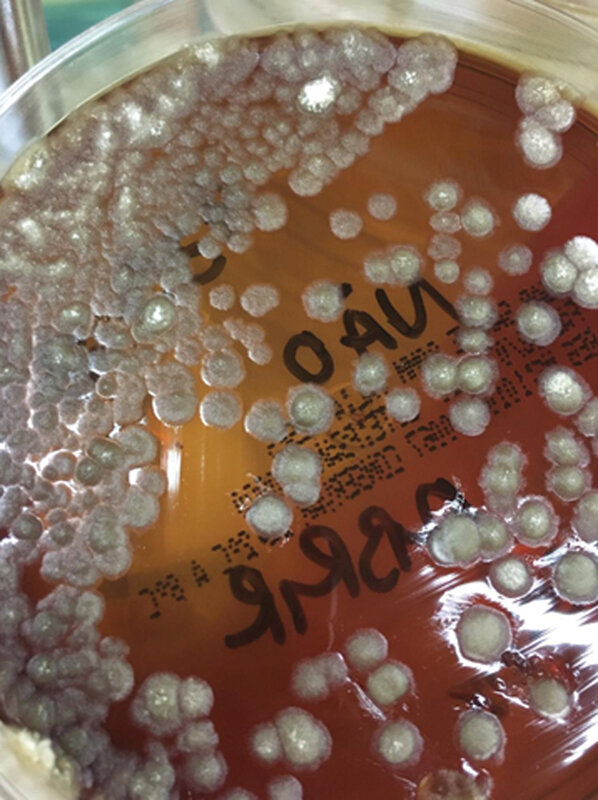
Additional factors such as genetics, hormonal changes, diet, and environmental stressors can exacerbate acne. Treatments typically focus on reducing inflammation, controlling oil production, and preventing bacterial proliferation.
The Science Behind Honey for Acne
Honey has been used for centuries in wound healing and skincare, thanks to its unique properties:
- Antibacterial Properties
Honey contains hydrogen peroxide, an antibacterial agent that can inhibit the growth of acne-causing bacteria like C. acnes. Manuka honey, in particular, is rich in methylglyoxal, a compound with potent antimicrobial activity. - Anti-Inflammatory Effects
Studies have shown that honey can reduce redness and swelling associated with acne due to its anti-inflammatory properties. - Moisturizing and Soothing
As a natural humectant, honey helps retain skin moisture without clogging pores, making it ideal for individuals with dry or combination skin. - Wound Healing
Honey promotes tissue repair and reduces the risk of scarring by stimulating fibroblast activity and collagen synthesis.
Limitations of Honey:
- While honey may help reduce bacterial growth and inflammation, it cannot unclog pores or regulate sebum production.
- Some commercial honeys lack the necessary antibacterial potency, reducing effectiveness.
The Science Behind Lemon for Acne
Lemon is rich in vitamin C (ascorbic acid) and citric acid, often touted for its brightening and exfoliating effects:
- Antioxidant Benefits
Vitamin C is a powerful antioxidant that helps neutralize free radicals, reducing oxidative stress and supporting skin repair. - Exfoliation
Citric acid, an alpha-hydroxy acid (AHA), exfoliates dead skin cells, promoting cell turnover and potentially unclogging pores. - Brightening Effect
Lemon juice may reduce hyperpigmentation and acne scars due to its mild bleaching properties.
Limitations of Lemon:
- Highly Acidic Nature: Lemon juice has a pH of 2-3, making it too acidic for most skin types. This can disrupt the skin’s natural barrier (acid mantle) and lead to irritation, redness, and dryness.
- Photosensitivity: Lemon can make the skin more sensitive to UV radiation, increasing the risk of sunburn and post-inflammatory hyperpigmentation.
- Allergic Reactions: Some individuals may develop contact dermatitis when exposed to lemon juice.
Combining Honey and Lemon for Acne
Proponents of this remedy argue that combining honey and lemon offers a balanced approach: honey’s soothing and antibacterial effects counteract lemon’s harshness. However, this combination might not work well for everyone.
Potential Benefits:
- Honey can mitigate some of the irritation caused by lemon’s acidity.
- Both ingredients have antibacterial properties that may target C. acnes.
- The mixture can act as a quick fix for mild acne and dull skin.
Why This May Not Be a Good Choice:
- Skin Sensitivity: Lemon’s acidity is too harsh for sensitive or acne-prone skin, potentially worsening inflammation.
- Unpredictable Results: Not all skin types react well to natural remedies. Those with oily or severe acne may see little to no improvement.
- Photosensitivity Risk: Using lemon-based treatments without proper sun protection can cause lasting skin damage.
- Inconsistent Potency: The effectiveness of honey depends on its purity and type, with raw or Manuka honey being more potent than processed varieties.
Scientific Studies on Honey and Lemon for Skin
- Honey’s Role in Wound Healing:
A study published in the Journal of Cosmetic Dermatology (2016) demonstrated honey’s efficacy in reducing bacterial infections and promoting healing in skin wounds. - Lemon’s Antioxidant Properties:
Research in the Journal of Clinical and Aesthetic Dermatology highlighted the role of vitamin C in reducing hyperpigmentation and oxidative stress. - Combination Studies:
While individual studies on honey and lemon exist, there is limited scientific evidence supporting their combined use for acne treatment.
Alternative Approaches to Acne Treatment
If honey and lemon aren’t suitable for your skin, consider these scientifically-backed alternatives:
- Salicylic Acid:
This beta-hydroxy acid (BHA) penetrates oily skin and unclogs pores, making it effective for blackheads and whiteheads. - Benzoyl Peroxide:
A powerful antibacterial agent that kills C. acnes and reduces inflammation. - Tea Tree Oil:
Known for its antimicrobial properties, tea tree oil can be a gentler alternative to lemon. - Niacinamide:
A form of vitamin B3 that reduces redness, regulates sebum production, and improves the skin barrier. - Retinoids:
These vitamin A derivatives promote cell turnover and prevent clogged pores, effectively targeting all types of acne.
Personal Experience and Why Honey and Lemon Didn’t Work for Me
When I first tried honey and lemon for acne, I was hopeful about their natural benefits. However, my experience was far from magical. Here’s why:
- Increased Irritation: Despite using a diluted lemon mixture, my skin became red and irritated after a few applications.
- Lack of Long-Term Results: While honey soothed my skin temporarily, it didn’t address the root causes of my acne, such as hormonal imbalances.
- Photosensitivity: After using lemon, I noticed that my skin was more prone to sunburn, even with sunscreen.
Where to Find Quality Honey and Lemon
If you still wish to try this remedy, sourcing high-quality ingredients is crucial:
- Honey:
- Opt for raw, organic, or Manuka honey with UMF (Unique Manuka Factor) certification for maximum potency.
- Trusted brands: Comvita, Wedderspoon, Nature Nate’s.
- Lemon:
- Choose organic lemons to avoid pesticide residue.
- Look for fresh, ripe lemons with vibrant yellow skin.
Availability by Region:
- North America: Farmers’ markets, Whole Foods, and health stores stock raw honey and organic lemons.
- Europe: Look for Manuka honey in specialty health shops or online platforms like Holland & Barrett.
- Asia: Raw honey is available in local markets, while organic lemons are common in grocery stores.
- Australia/New Zealand: Manuka honey is native to this region and widely available.
How to Use Honey and Lemon Safely
If you decide to try this remedy, follow these precautions:
- Patch Test: Apply a small amount of the mixture to your wrist and wait 24 hours to check for adverse reactions.
- Dilute Lemon Juice: Mix lemon juice with honey or water to reduce acidity.
- Sun Protection: Always apply sunscreen after using lemon-based treatments.
Why Consulting a Doctor for Skin Issues Is Crucial
When it comes to addressing skin issues like acne, hyperpigmentation, or any form of skin infection, it’s essential to take a holistic approach. While home remedies and over-the-counter products might provide temporary relief, they often only address the symptoms, not the root cause. My piece of advice? If you’re struggling with persistent or severe skin issues, always seek professional help from your family doctor or, better yet, a dermatologist. Many skin conditions are indicators of underlying health problems that require a more comprehensive treatment plan.
Skin as a Window to Internal Health
Your skin is not just a superficial layer—it’s an organ that reflects what’s happening inside your body. Many systemic health issues manifest on the skin before other symptoms appear, making it a crucial diagnostic tool for healthcare professionals. For instance, chronic acne, hyperpigmentation, or unusual skin infections might point to hormonal imbalances, metabolic disorders, or even autoimmune diseases.
The Link Between Acne and Hormonal Imbalances
Acne is one of the most common skin concerns, especially among adolescents and young adults. While it’s often attributed to clogged pores and bacterial growth, the underlying causes can be more complex. Polycystic Ovary Syndrome (PCOS), for example, is a common hormonal disorder among women that can lead to persistent acne.
- How Hormones Contribute to Acne:
Hormonal fluctuations increase sebum production in the skin, leading to clogged pores and the growth of acne-causing bacteria like Cutibacterium acnes. Women with PCOS often experience elevated levels of androgens, which exacerbate these effects. - Why Topical Treatments Might Not Be Enough:
If your acne is driven by hormonal imbalances, using topical creams or cleansers alone might yield little to no results. Instead, addressing the root cause—hormonal regulation—through medications like oral contraceptives, anti-androgens, or lifestyle changes is crucial.
Hyperpigmentation: More Than Just a Cosmetic Concern
Hyperpigmentation, characterized by dark patches on the skin, is another issue that often signals deeper health problems. A well-known example is acanthosis nigricans, a condition where thickened, darkened skin appears on areas like the neck, armpits, or groin.
What Is Acanthosis Nigricans?
Acanthosis nigricans is not just a cosmetic problem; it’s a potential warning sign of underlying conditions like:

Achanthosis nigricans - Insulin Resistance and Diabetes:
This condition is strongly associated with insulin resistance, a precursor to Type 2 diabetes. High insulin levels stimulate the growth of skin cells and melanin production, resulting in dark, velvety patches. - Obesity:
People who are overweight or obese are more prone to acanthosis nigricans due to increased insulin levels and inflammation. - Hormonal Disorders:
Conditions like PCOS or adrenal gland disorders can also lead to this type of hyperpigmentation. - Certain Medications:
Drugs like oral contraceptives, corticosteroids, or niacin can sometimes trigger acanthosis nigricans as a side effect.
Why You Shouldn’t Ignore It
Many individuals dismiss darkened patches of skin as mere aesthetic issues, but they’re often an early sign of metabolic syndrome, prediabetes, or even internal malignancies in rare cases. Addressing the underlying condition not only improves your skin but also prevents long-term complications like cardiovascular disease or diabetes.
Skin Infections and Their Underlying Causes
Recurrent or unusual skin infections can also indicate systemic problems:
- Fungal Infections:
Conditions like recurrent athlete’s foot or fungal nail infections might signal a weakened immune system. For example, people with uncontrolled diabetes are more prone to these infections due to high blood sugar levels that promote fungal growth. - Bacterial Infections:
Frequent boils or abscesses could be a sign of an underlying immunodeficiency or poorly controlled diabetes. - Viral Infections:
Chronic viral infections like herpes simplex or shingles might point to immune suppression, often seen in conditions like HIV/AIDS or in individuals undergoing chemotherapy.
The Importance of Early Diagnosis
Ignoring skin issues or self-medicating without a proper diagnosis can lead to delayed treatment of underlying conditions. For example:
- Treating acne with over-the-counter products might work temporarily but won’t address hormonal imbalances if PCOS or thyroid dysfunction is the cause.
- Using bleaching creams for hyperpigmentation caused by insulin resistance might lighten the skin but won’t reduce the risk of developing diabetes.
By consulting a dermatologist or physician, you gain access to diagnostic tools like blood tests, hormone panels, or biopsies that can pinpoint the root cause of your skin issues.
Common Underlying Conditions That Affect Skin Health
Let’s take a closer look at some systemic issues that frequently manifest as skin problems:
- Thyroid Disorders:
Both hypothyroidism and hyperthyroidism can cause dry skin, hair thinning, or hyperpigmentation. - Liver Disease:
Conditions like hepatitis or cirrhosis can cause jaundice (yellowing of the skin) or spider angiomas. - Autoimmune Diseases:
Lupus, for instance, can lead to a butterfly-shaped rash across the cheeks, while psoriasis causes thick, scaly patches of skin. - Nutritional Deficiencies:
A lack of vitamins like B12, iron, or zinc can result in pale skin, brittle nails, or hair loss.
When to See a Doctor
Here are some signs that your skin issue might warrant a visit to a healthcare professional:
- Acne that doesn’t improve with standard treatments or worsens over time.
- Hyperpigmentation in areas like the neck, armpits, or groin.
- Persistent or recurrent skin infections.
- Unexplained rashes, discoloration, or itching.
- Sudden changes in the appearance of moles or skin lesions.
Practical Tips for Maintaining Skin Health
While consulting a doctor is crucial for addressing underlying conditions, you can also adopt practices to support overall skin health:
Regular Exercise:
Physical activity improves circulation, delivering oxygen and nutrients to your skin while reducing stress levels.Maintain a Balanced Diet:
Include foods rich in antioxidants, vitamins, and minerals to promote skin regeneration and reduce inflammation.Stay Hydrated:
Drinking enough water helps flush out toxins and keeps your skin hydrated.Manage Stress:
Chronic stress can worsen conditions like acne or psoriasis by triggering hormonal imbalances and inflammation.Avoid Harsh Products:
Overusing harsh cleansers or scrubs can damage your skin barrier, making it more susceptible to infections and irritation.
Conclusion: The Verdict on Honey and Lemon for Acne
Honey and lemon are natural ingredients with notable benefits, but their effectiveness as acne remedies is subjective and depends on individual skin types. While honey offers antibacterial and healing properties, lemon’s harshness and potential for irritation make it a risky choice for many.
This remedy may provide temporary relief for mild acne. However, those with sensitive, oily, or severe acne should consider scientifically proven alternatives like salicylic acid, benzoyl peroxide, or retinoids. Always consult a dermatologist before starting any new treatment, natural or otherwise.
By understanding the science behind honey and lemon, you can make informed decisions about your skincare routine, ensuring both safety and effectiveness.
References:
Journal of Cosmetic Dermatology
PubMed: Honey in Wound Healing
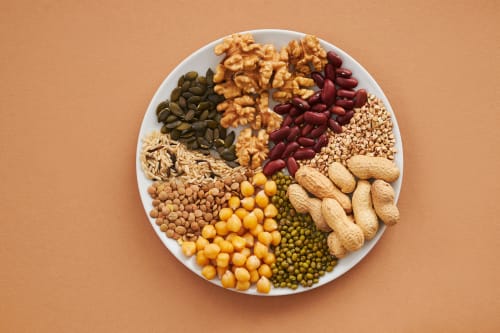









Leave a Reply to Period Bloating: 6 Natural Remedies to Feel Better | A Youth's Guide Cancel reply